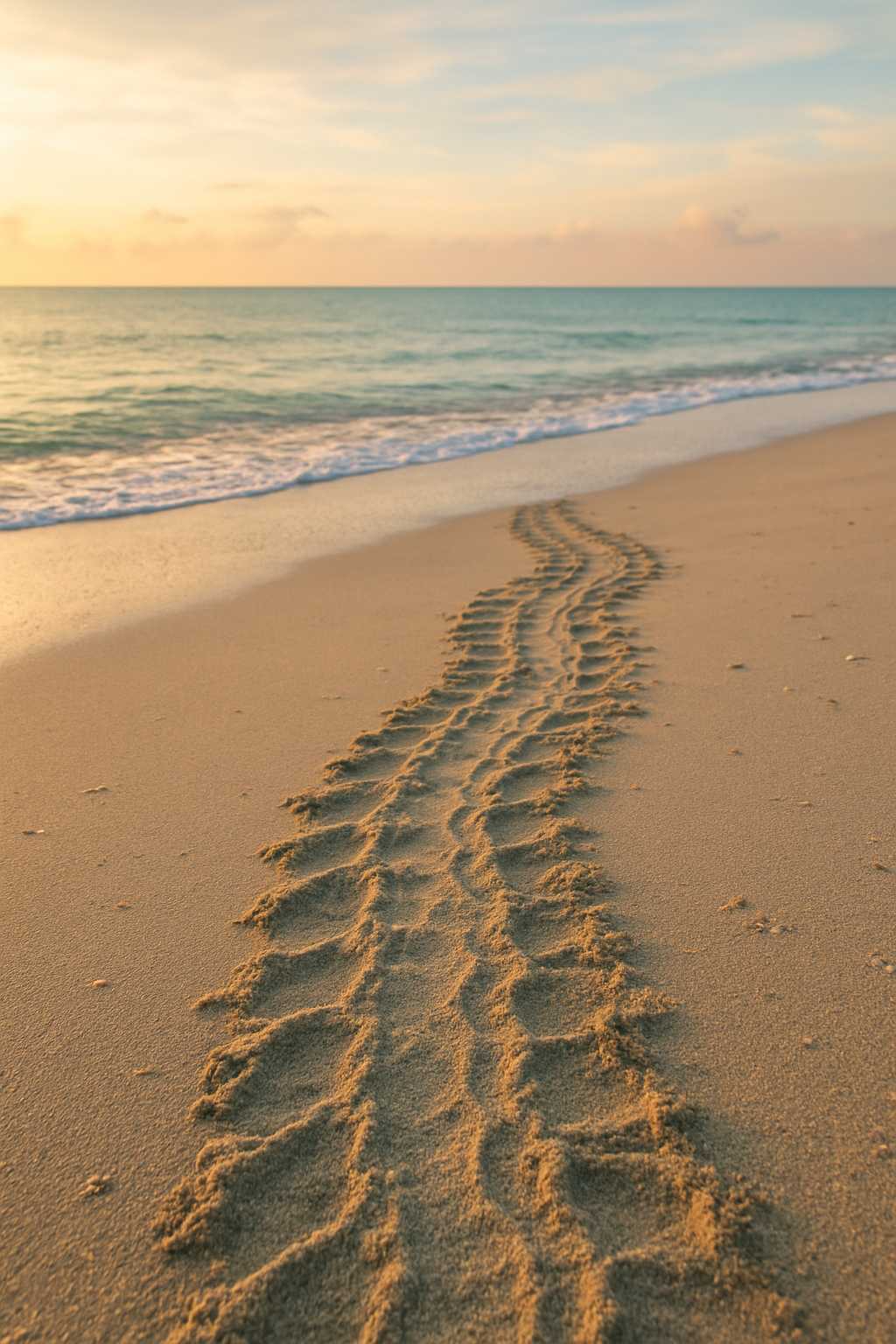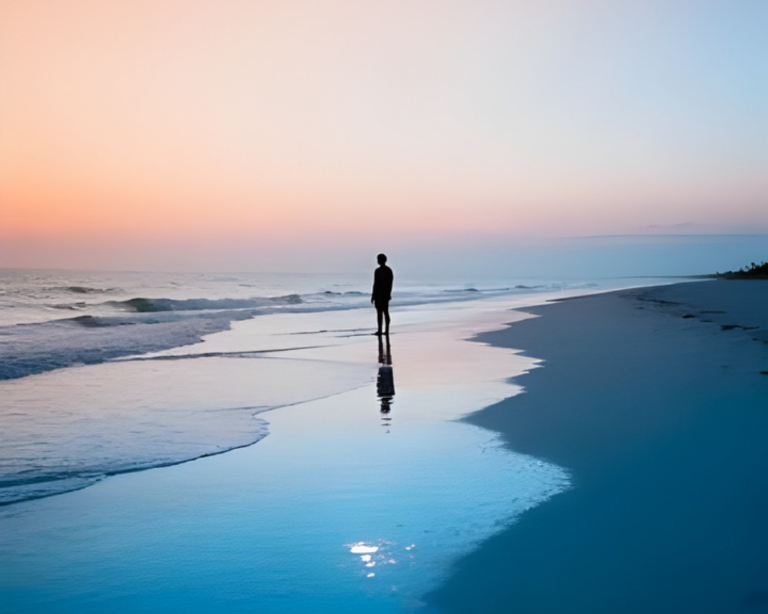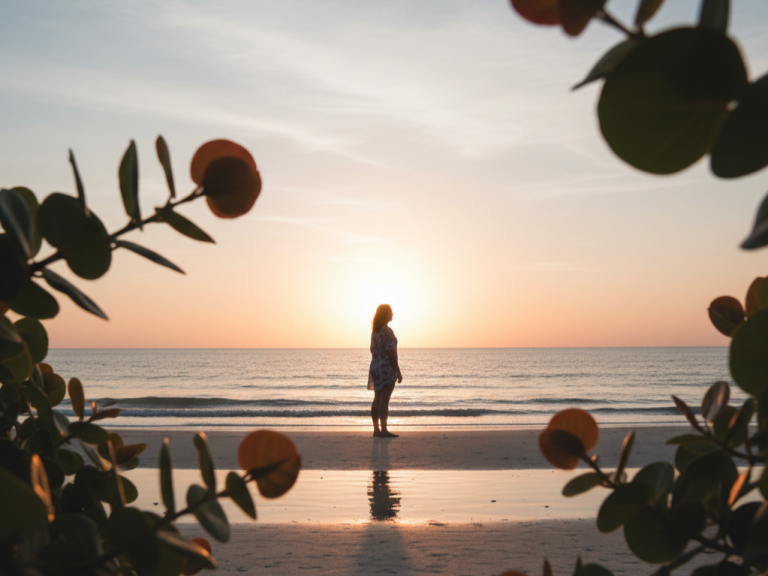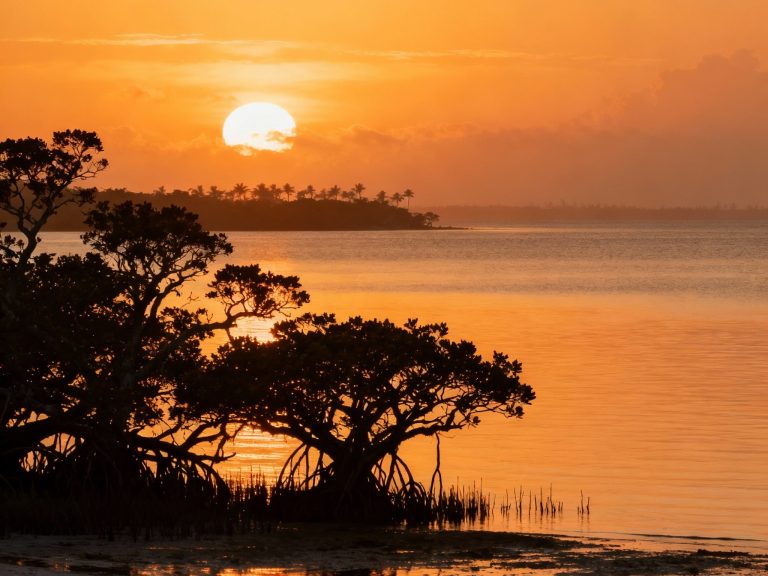These tiny marks hold stories you won’t believe until you see them…
Sanibel’s beaches change by the hour — tides reshape the shore, wind smooths the dunes, and now and then, faint trails appear like handwritten notes in the sand. They belong to turtles who arrived in the quiet hours, guided by moonlight and instinct older than memory.
According to the Sanibel-Captiva Conservation Foundation, more than a hundred sea turtle nests decorate these beaches each summer. Each track tells of a silent journey from sea to shore — a story of return, resilience, and new beginnings.
I once saw one just after dawn — thin, patterned marks curving from the sea toward the dunes. No noise, no footprints around. Only the slow sunrise, and the feeling that something ancient had just happened.
Keep reading. The sand remembers more than it shows.
Tracks in the Moonlight
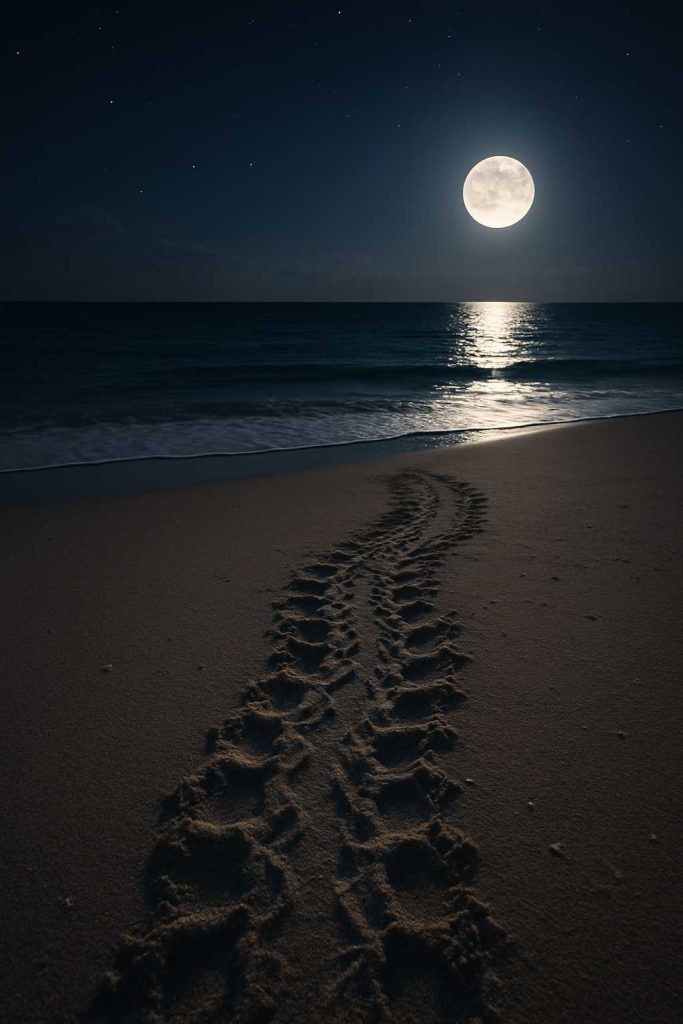
At night, Sanibel’s beaches turn into storybooks written in silver light.
The wide, flipper-shaped tracks show where a mother turtle came ashore. The single, soft trail down to the tide marks where her young returned to the sea.
Each track is temporary — erased by the next tide — but while they last, they’re living evidence of something older than our cities.
Quick facts — what tracks reveal:
- Broad parallel marks = adult female; single center groove = hatchlings.
- Sea turtles usually nest between May and October.
- Hatchlings head toward moonlight reflecting on water, not artificial lights.
- Volunteers check and mark nests every morning during nesting season.
- The best time to see tracks: just after sunrise, before beach traffic.
Simple checklist — to witness the moment:
- Walk the beach early, between 6–7 a.m.
- Stay 30 feet back — never step on tracks or nests.
- Bring binoculars, not flashlights.
- Avoid loud noises; hatchlings are easily disoriented.
- Watch for tiny “comma-shaped” prints near the tide line — that’s where life begins again.
Tiny truth: Tracks are only visible for a few hours, yet they echo millions of years of migration.
The Secret Life Beneath the Sand

While the surface looks still, the sand hides an entire nursery.
A single nest can hold 80–120 eggs, buried deep to stay cool and safe. Temperature determines gender: warmer sand tends to create more females; cooler nests produce males — a quiet balance of nature.
When storms pass, the nests endure, often untouched — proof of how life adapts to wind, salt, and time.
Short list — what happens below:
- Eggs incubate about 60 days before hatching.
- Hatchlings dig upward, guided by vibration and moonlight.
- Only about 1 in 1,000 reach adulthood — predators and tides take most.
- Conservationists monitor nests daily, logging survival rates.
How to learn more:
- Visit the Sanibel-Captiva Conservation Foundation (SCCF) for guided walks.
- Check local turtle nest maps — they update weekly during nesting season.
- Follow SCCF on social media for hatching alerts and educational posts.
Quiet wonder: Beneath that sand, hundreds of new travelers wait for their first glimpse of the ocean.
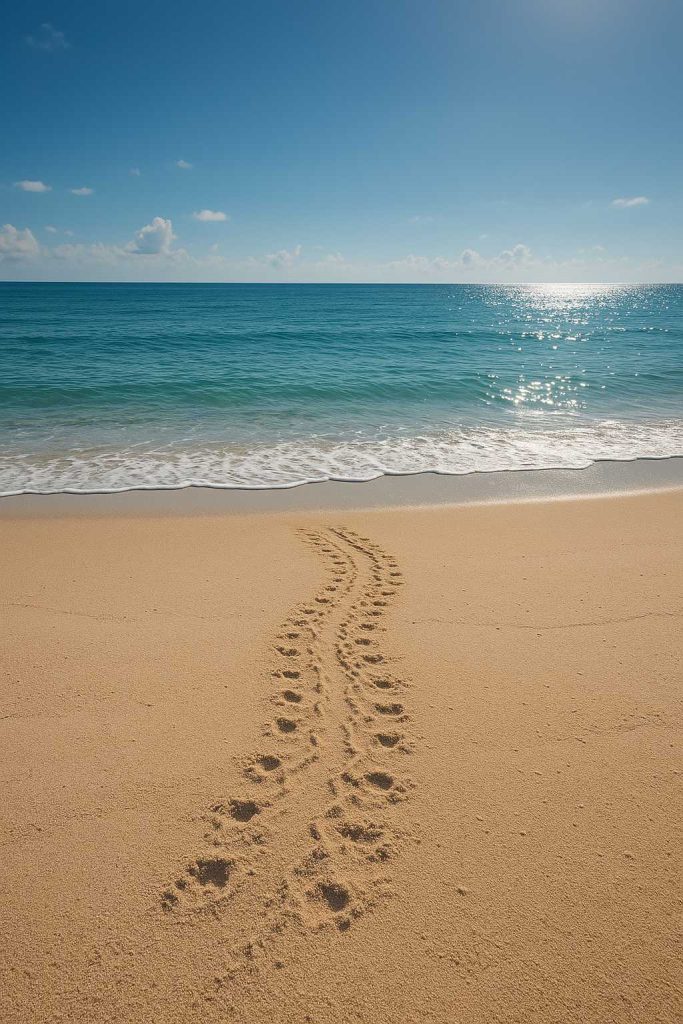
Where the Stories Continue
By October, nesting season slows. The beach looks calm again, but the story continues offshore. Tiny hatchlings that survived now drift in seaweed mats across the Gulf of Mexico, feeding and growing before their long migration south.
Locals say you can sometimes spot young turtles near Tarpon Bay or Lighthouse Beach — brief flashes of movement that feel like thank-you waves.
Short list — how to keep their story safe:
- Use amber-colored lights near the beach at night.
- Never leave chairs or umbrellas out overnight; they block hatchlings.
- Fill in sand holes and flatten castles before you leave.
- Dispose of plastic responsibly — it often looks like jellyfish to turtles.
- Support local conservation through small donations or volunteering.
Odd but true: Female turtles return to the same beach where they hatched — sometimes decades later.
Each generation writes its own line in the sand, and Sanibel keeps every story.
Conclusion
Sanibel’s turtle tracks are more than patterns — they’re signatures of survival and serenity. Each print pressed into the sand connects two worlds: the vast sea and this small island we love. Watching them reminds us that miracles rarely announce themselves — they arrive quietly, one soft flipper mark at a time.
Next time you walk the shore at sunrise, look closely. The sand might still be whispering.
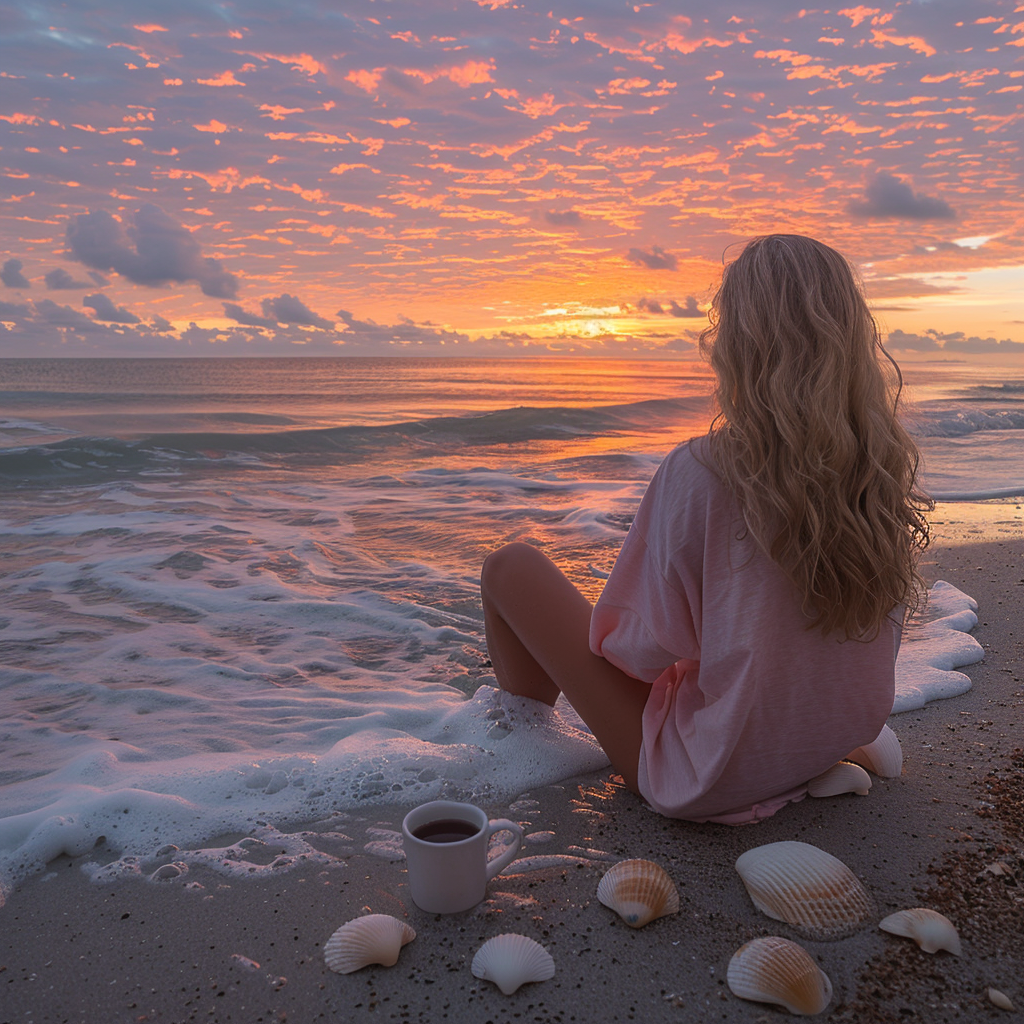
I’m Ayla Wolesky, and I’ve spent years exploring every corner of Sanibel Island. From its pristine beaches to the hidden gems only locals know about, I’m passionate about sharing everything this beautiful island has to offer. Whether it’s the best spots for shelling, the wildlife that makes Sanibel so special, or where to enjoy a perfect sunset, I’ve got you covered. My goal is to provide insider tips and up-to-date information that will help you experience Sanibel Island like never before.


